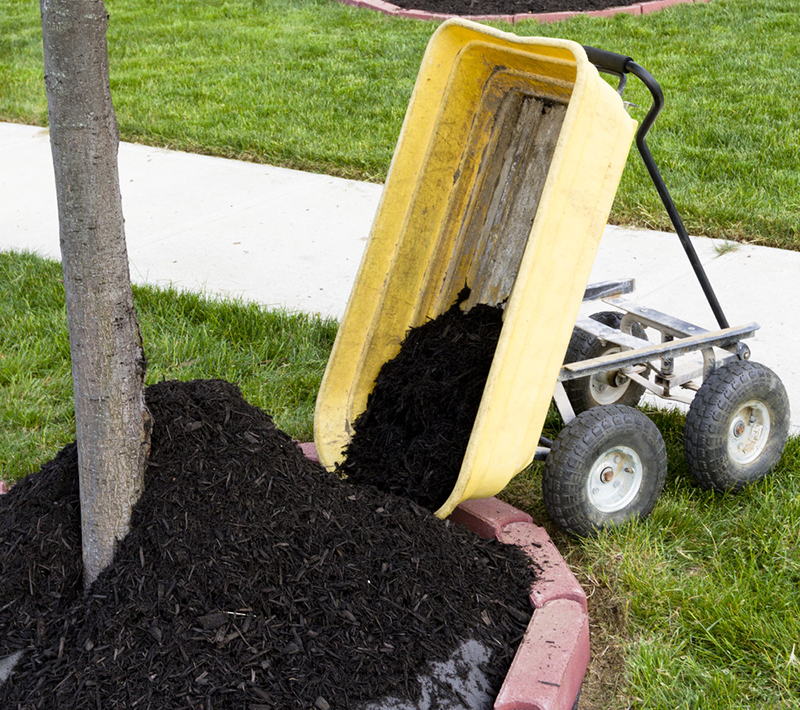
The dreaded mulch volcano
We’re more engaged with the ritual rather than the reason. You think you’re freshening up your garden for the season ahead but if you’re like most people you’ll actually end up drowning your poor plants in a bark ocean. Don’t worry it’s not your fault! The mountains of mulch you are trying to spread around your bedding is probably exactly the amount that was loaded up on the truck; it just might not be the amount you actually need. But if you think about what your goal is for the mulch – to create a barrier to choke out weeds and insulate soil – and you think about the mulch transporter’s goal – to empty a boatload of mulch – it doesn’t take much time to figure out where the extra 13 cubic yards came from (and no it should not be formed into a mulch volcano over around your tree trunks).
Mulch should be spread about 2” thick and only where it is needed (i.e. where there are no plants). A lot of the time you can rake in less new mulch with existing old mulch and still get a nice fresh look without over mulching. Mixing leaf compost in with your mulch will help build soil structure, increase micro organism activities and add nutrients, all working towards creating more robust plants rather than just spreading bark around.

Though it may sound adorable to have a butterfly garden or a bee hive hotel, purchasing plants and products from the “trendy garden theme” section of your local hardware store is not always the best solution for the outcome you are actually trying to purchase. Well-designed gardens with an ecologically sustainable backbone will operate just like nature intended; attracting wildlife and encouraging pollination from our little fuzzy black and yellow, buzzing friends. Native bees would prefer their actual home of properly planted native plants, over a cardboard Super 8 – go figure. And any garden can be a Pinterest-worthy butterfly garden with the right perennials. Spend your money on the right plants to purchase the “theme” outcome you are actually looking for.
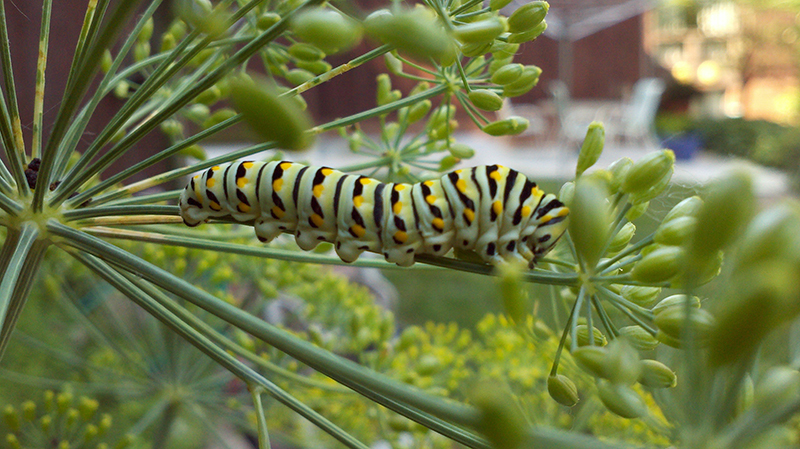
Planting ecologically correct plants help create an outcome that nature intended. To bring native birds, moths and butterflies to your outdoor space you need to make them feel at home. Doug Tallamy, author of Bringing Nature Home is quoted in the Spring issue of Garden Design saying “We have diminished the natural areas that made our world livable in so many places that we now need to restore ecosystem function everywhere we can, including our gardens. We must raise the bar of what we ask of our landscape… we have viewed them only in terms of entreatment, rather than as the essential backbone of the natural world that supports us. Unfortunately there are consequences to designing landscapes that ignore the ancient relationships that comprise nature, particularly those that enable plants to pass on to animals the energy they have captured from the sun.” From Tallamy’s research at his Carolina home, he noted that it takes nearly 6,000-9,000 caterpillars to raise a clutch of native chickadees; and these nesting parents are not going to fly far to find their lunch. Planting the right plants to help support this food web will fill your outdoor space with new life just as nature intended. Native plants, support native insects which support native wildlife which supports your affinity for the native scene out your back door.
Use this handy website from the National Wildlife Federation to find native plants in your zipcode: http://www.nwf.org/nativeplants-beta
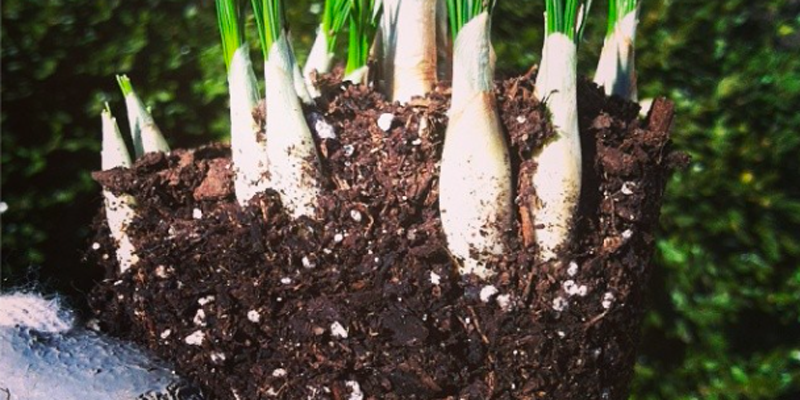
We understand that winter is long and waiting for spring can be tough! Like we REALLY understand. The Purple Polos were born to be outside and in the gardens! But just because we can’t wait for spring, doesn’t mean we don’t wait. Spring only comes once a year so we need to remember to not rush through it. Your garden should not be summer ready by March 21. Step back and enjoy the show. Stop rushing around from chore to chore and falling for the spring sale gimmick – national advertisements are not tailored to the great plains of Nebraska. Just because mulch and fertilizer are on sale, doesn’t necessarily mean it is time to mulch and fertilize. Pay more attention to what is going on outside your front door and not what’s flashed across the Sunday ads. Don’t frown at small plants or green tips of bulbs poking through the soil; instead enjoy the simple pleasure of watching things grow. Life has a sometimes slow process and spring is your time to sit back and enjoy the view. In the wise words of Myron S. Kaufman, “Watching something grow is good for morale. It helps us believe in life.”
Every spring we are bombarded with ad after ad filled with the ‘latest and greatest’ plant material when in actuality we should be celebrating the “tried and true” ringers of past seasons. Be cautious of the “new” and consider native when planting this spring.
Along with all the fresh new plants growing in your garden this spring, there may also be a fresh crop of weeds! The dandelion slayer in you may want to run and grab the weed and feed and get spraying, but you must remember the plants you are trying to protect. Your wee little garden is full of tender new sprouts and renegade fumes from your sprayer can be harmful to their growth. To cut down on herbicide damage, be sparing with your sprays. In spring, spot treat carefully or if you can, try and use broad leaf weed control in the fall.
Though one may believe that a “dwarf” variety would be referring to a petite plant, this label simply distinguishes a slower growth rate, that of about 1-6” per year. So while that dwarf lilac shrub would look oh so adorable framing your big bay window, unless you have 8 feet of clearance, you won’t have much of a view out that window for long. Do a little research before you plant and read the entire plant tag (beyond just the cute dwarf label).
When spring time rolls around everyone is anxious to get back in the garden! They see their plants just emerging from winter’s sleep and want them to regain their spring time glory – stat! Out come the shears, hedgers and pruners to “get things back in order”. But without knowledge of the plant’s name, function, and natural form, “getting things back in order” turns into a hack-job-from-hell for your poor plants.
First of all you should never prune or shear a plant if you do not know what it is. Without proper background knowledge you could be seriously damaging the form of the plant or cutting away it’s only source of spring growth. The identification of the plant is crucial for effective pruning. Once you know what the plant is, you can identify the natural form. Simply search the plant name online or in a plant manual and you can get all sorts of information on a plants natural size, form and aesthetic appeal. Now it is important to step back and figure out what the plant’s function is in your garden. Is it a screen? A hedge? A stand along specimen? A foundation planting? Or a ground cover? Once the purpose is determined, you can decide if the natural form is appropriate or if some hedging is required.
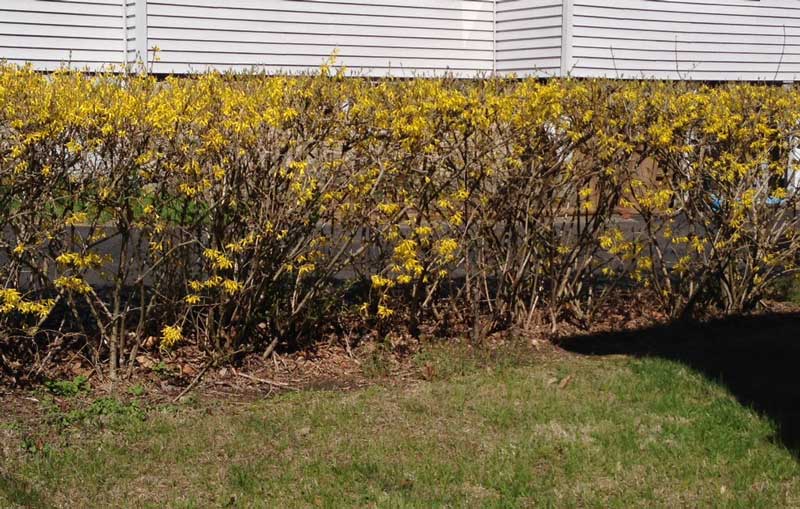
Unnatural Forsythia
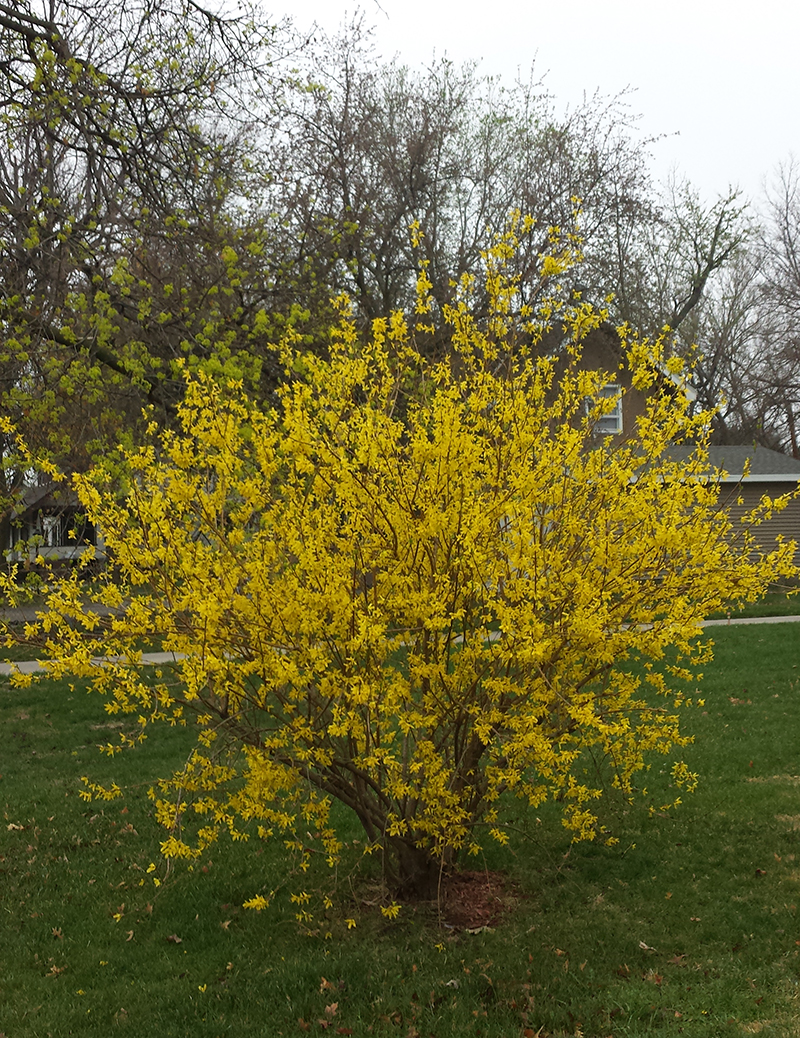
Natural Forsythia
One particular plant we see massacred each spring is the Forsythia. Many homes have Forsythia shoved up next to the house as a foundation planting and when spring time rolls around they are sheared into an unnatural sphere or cubed form. But if the home owner knew what they were dealing with, they would know Forsythia are Victorian shrubs. They are meant to grow 8’-11’ high and 10’-12’ wide and work best as yard shrubs! Not exactly a foundation planting if you ask me. When they are sheared and shaped, Forsythia loose their pretty yellow flowers that grow on the ends of their branches and end up a thin, scraggly mess. Give your plants a chance this year, put down the pruners and pick up Michael A. Dirr’s Manual of Woody Landscape Plants.
So now spring is here and you know what to avoid; don’t over mulch, don’t rush, don’t damage your new growth with herbicide and put down the shears! Sit back and enjoy watching spring unfold, the season of new is waiting to be admired.
Exciting! New plants in the garden! But wait....now what? How much water? When? Quick considerations before watering: Sun & Shade - Although most may say that shade gardens need less...
Spring fills us with wonder. Not in the ‘feeling of surprise mingled with admiration, caused by something beautiful’ kind of way. More along the lines of ‘what can I plant in my empty...